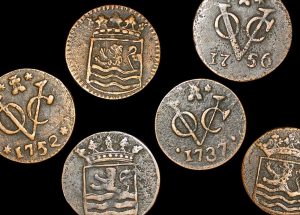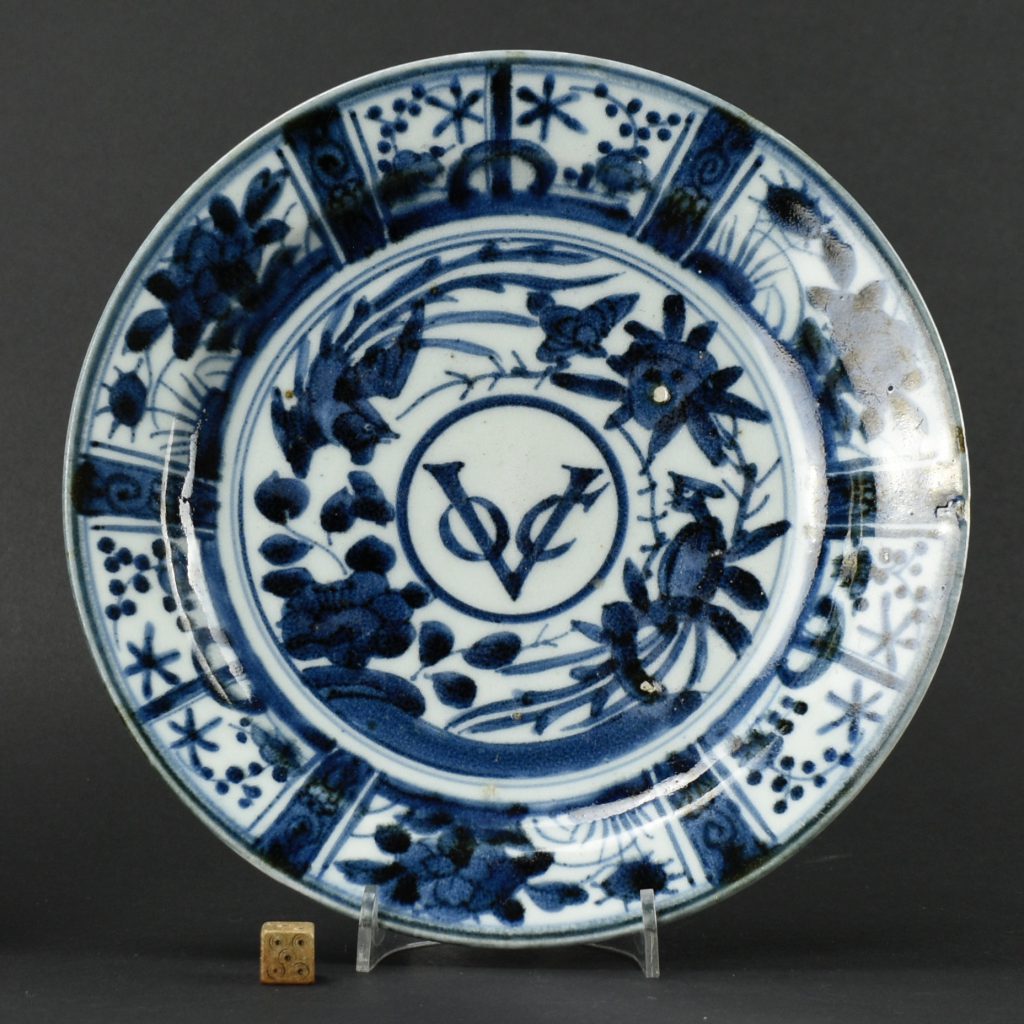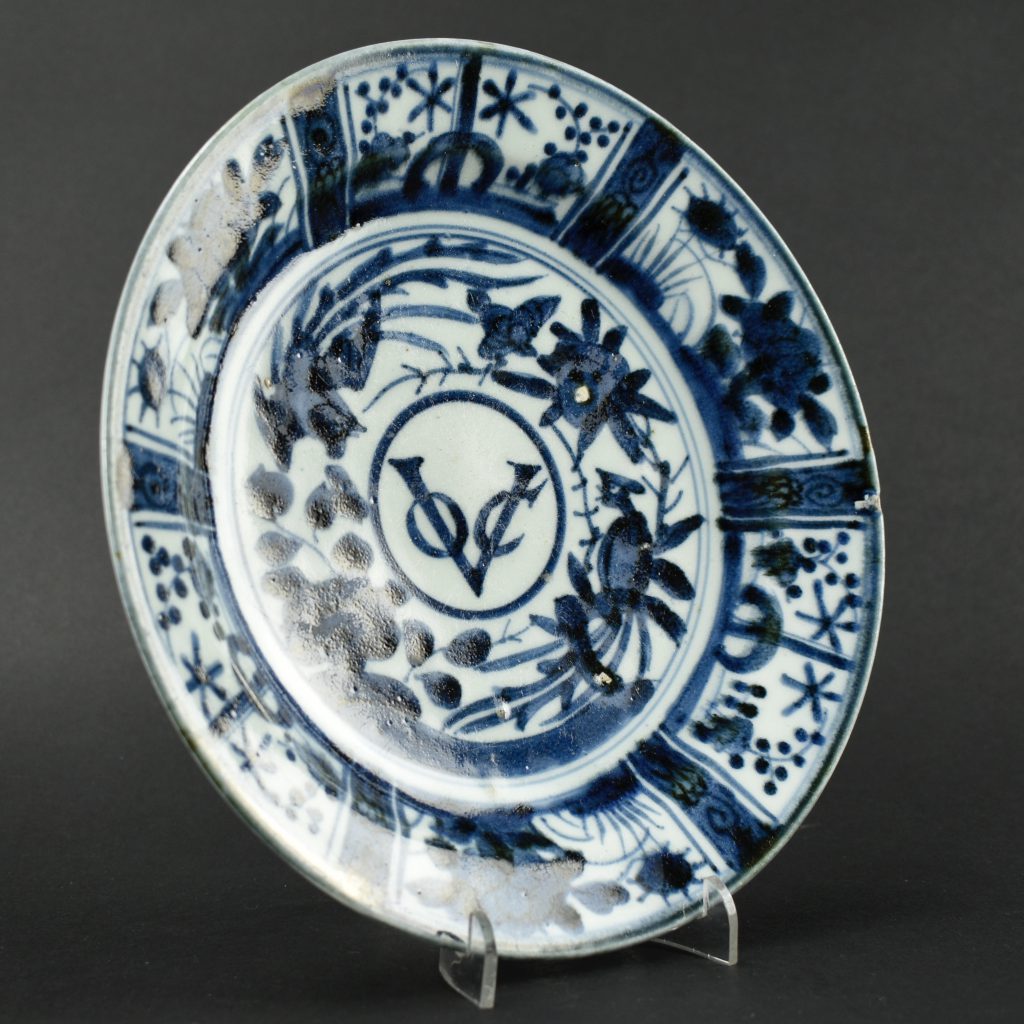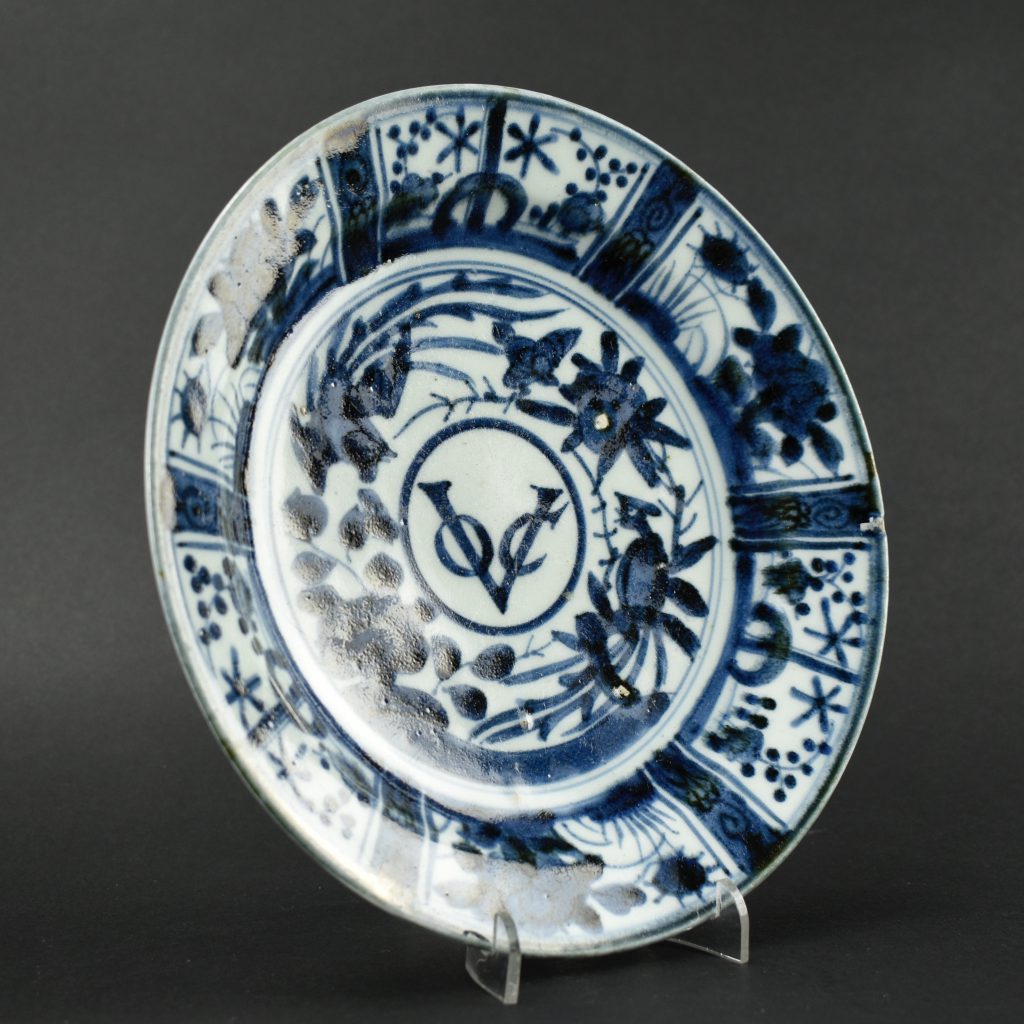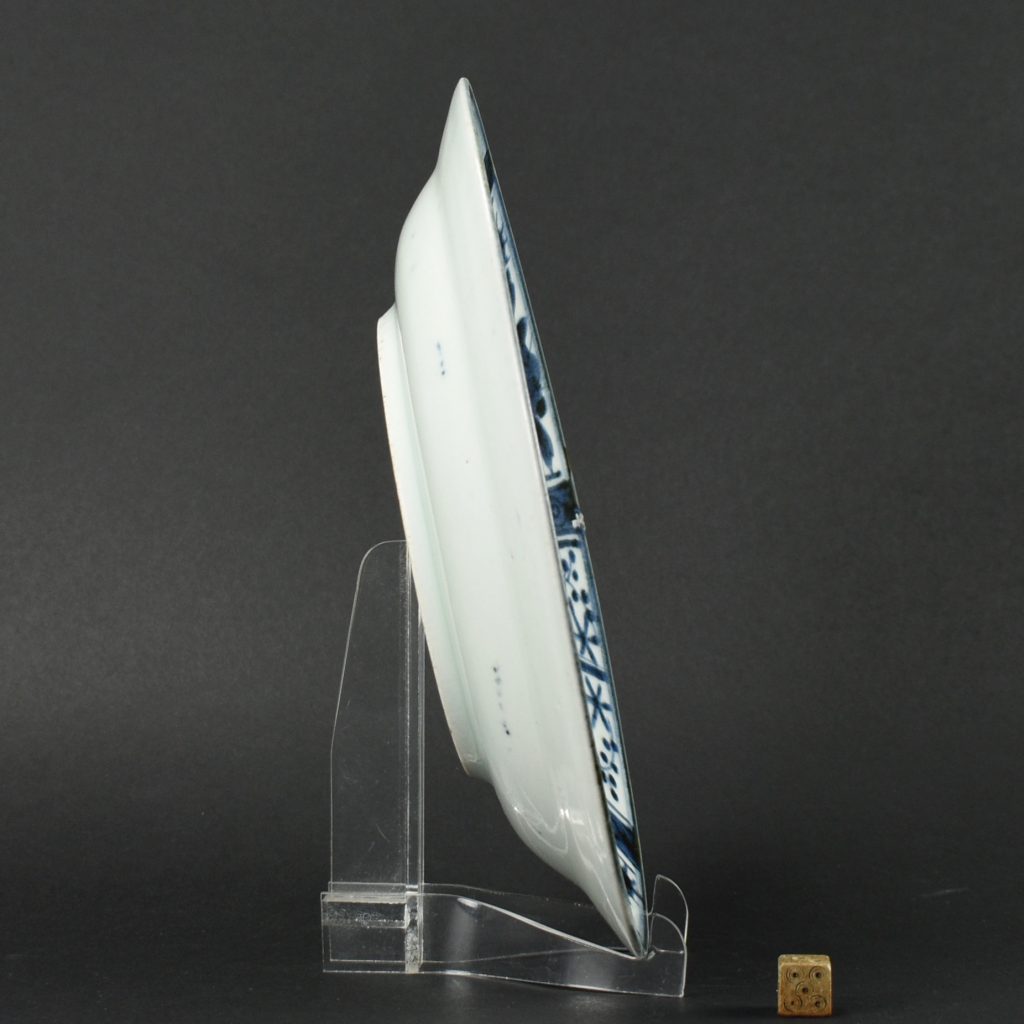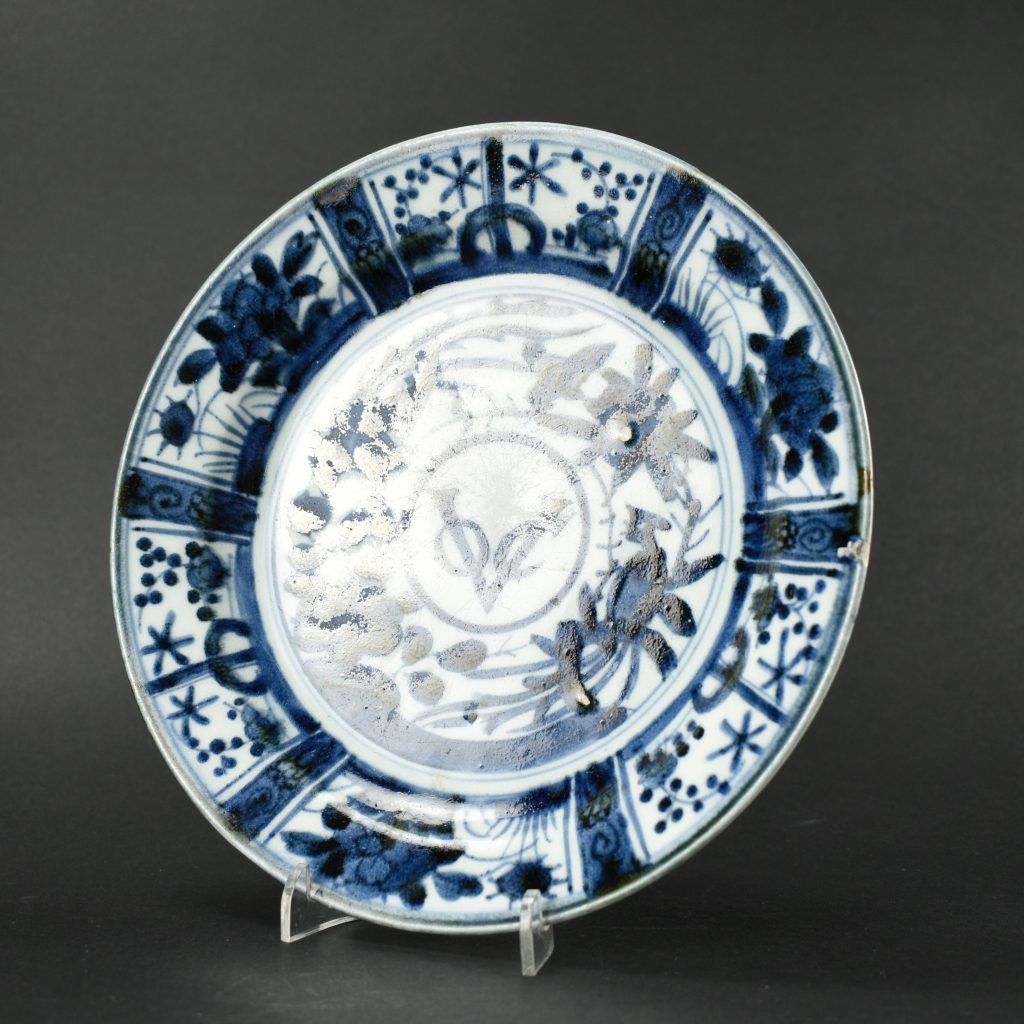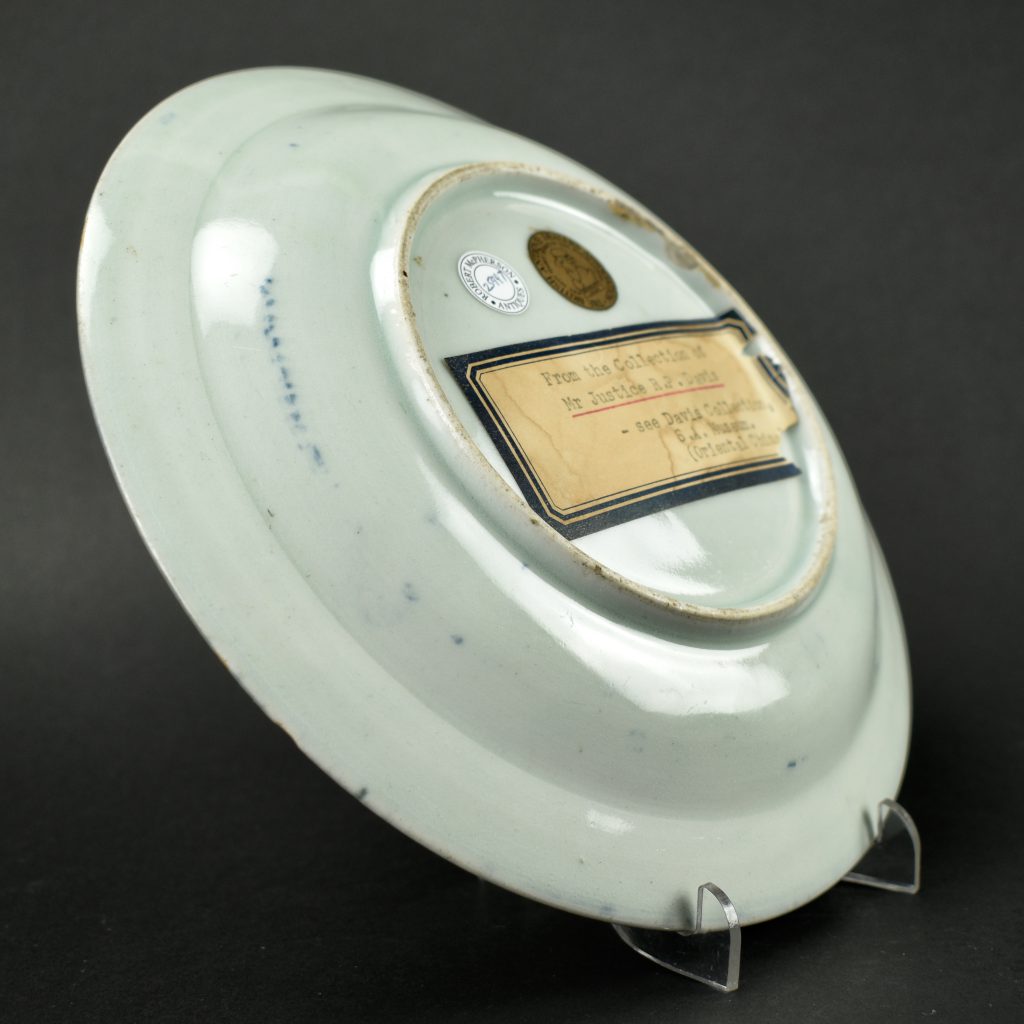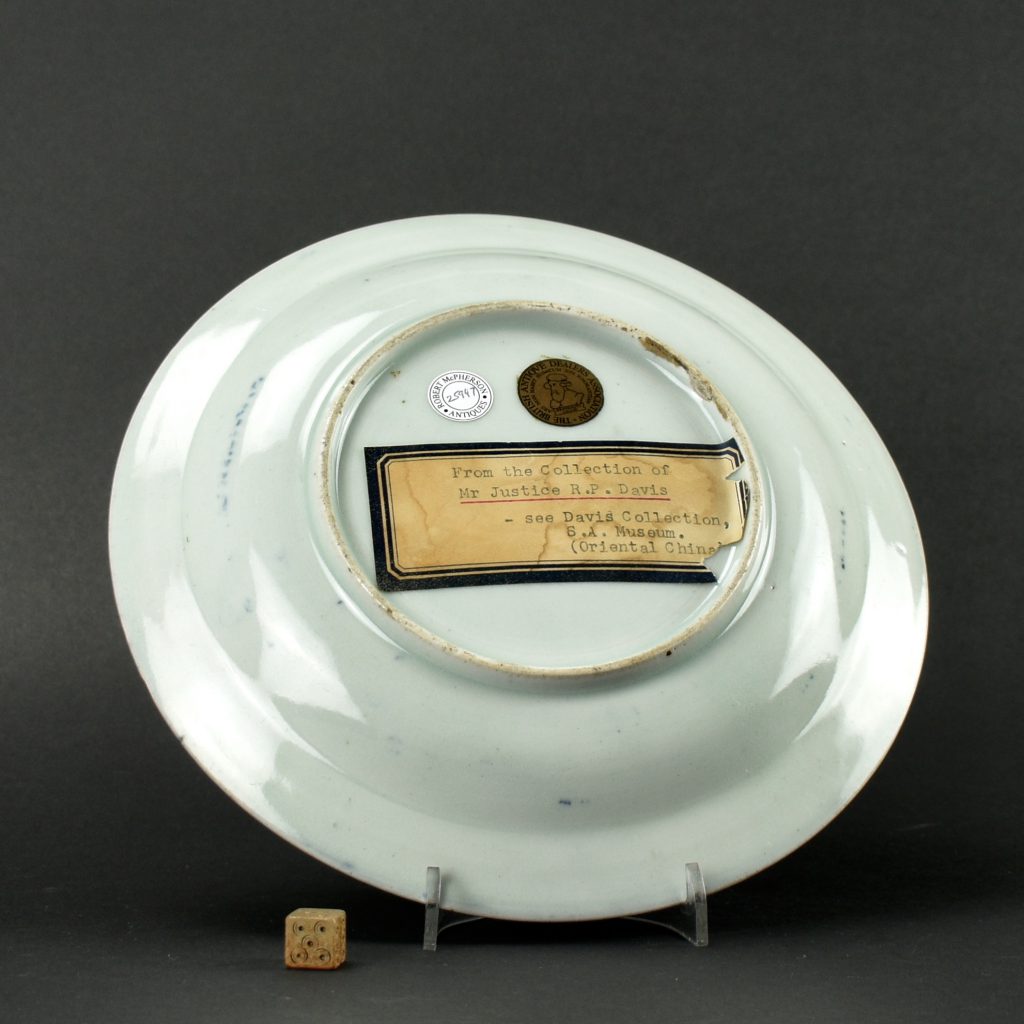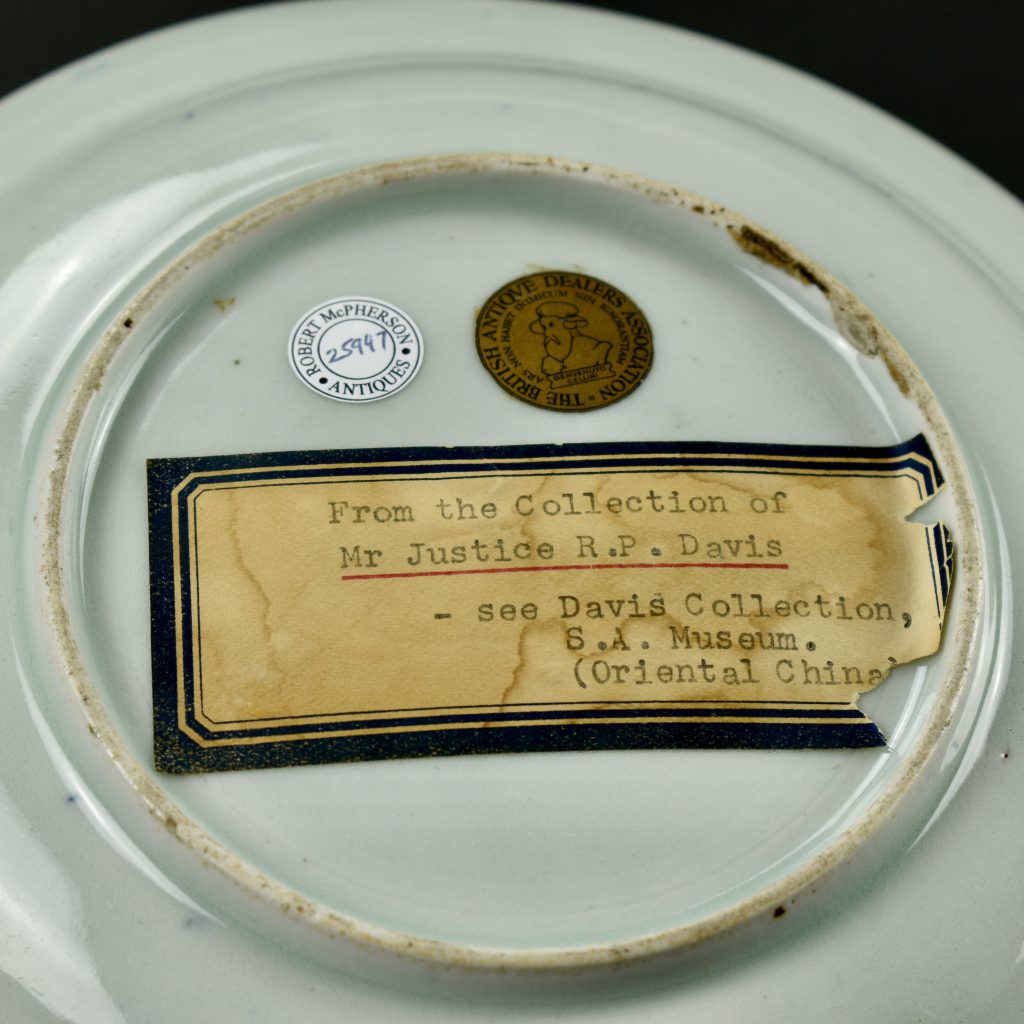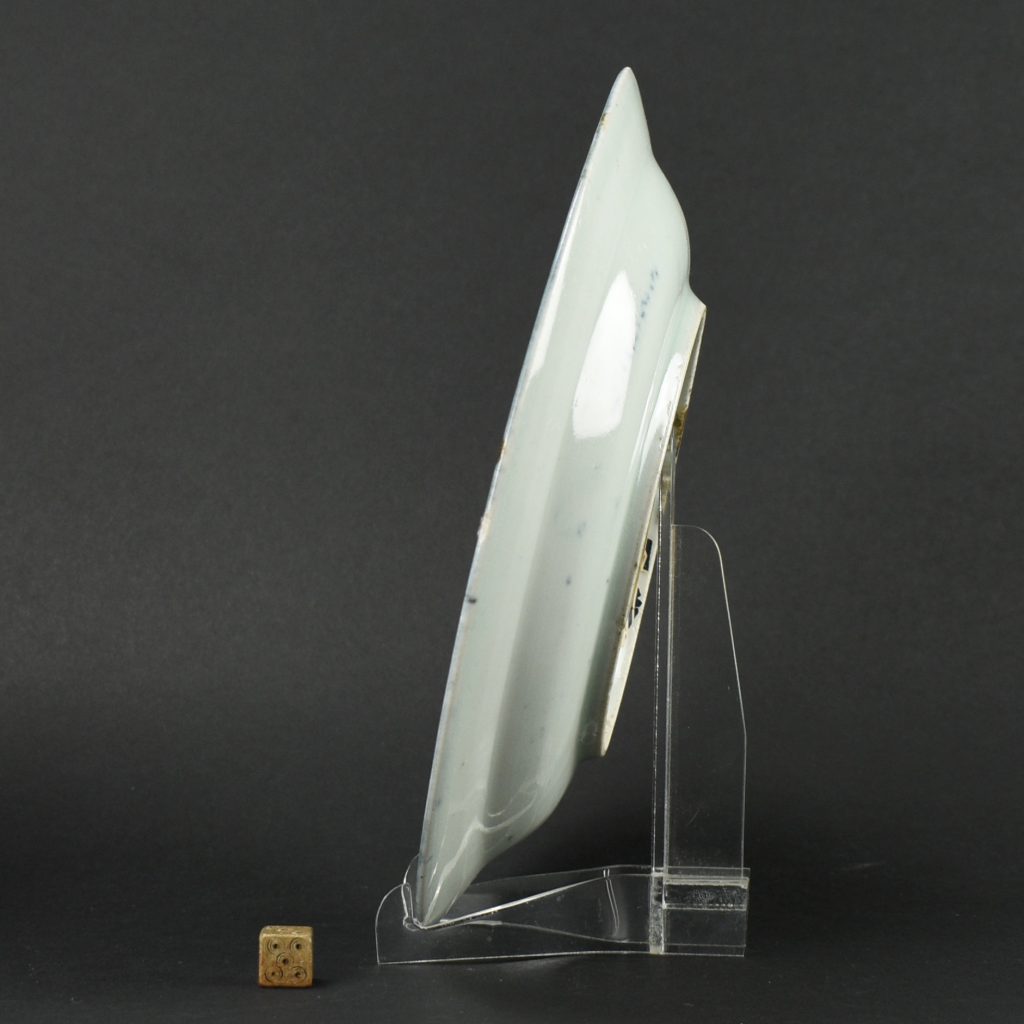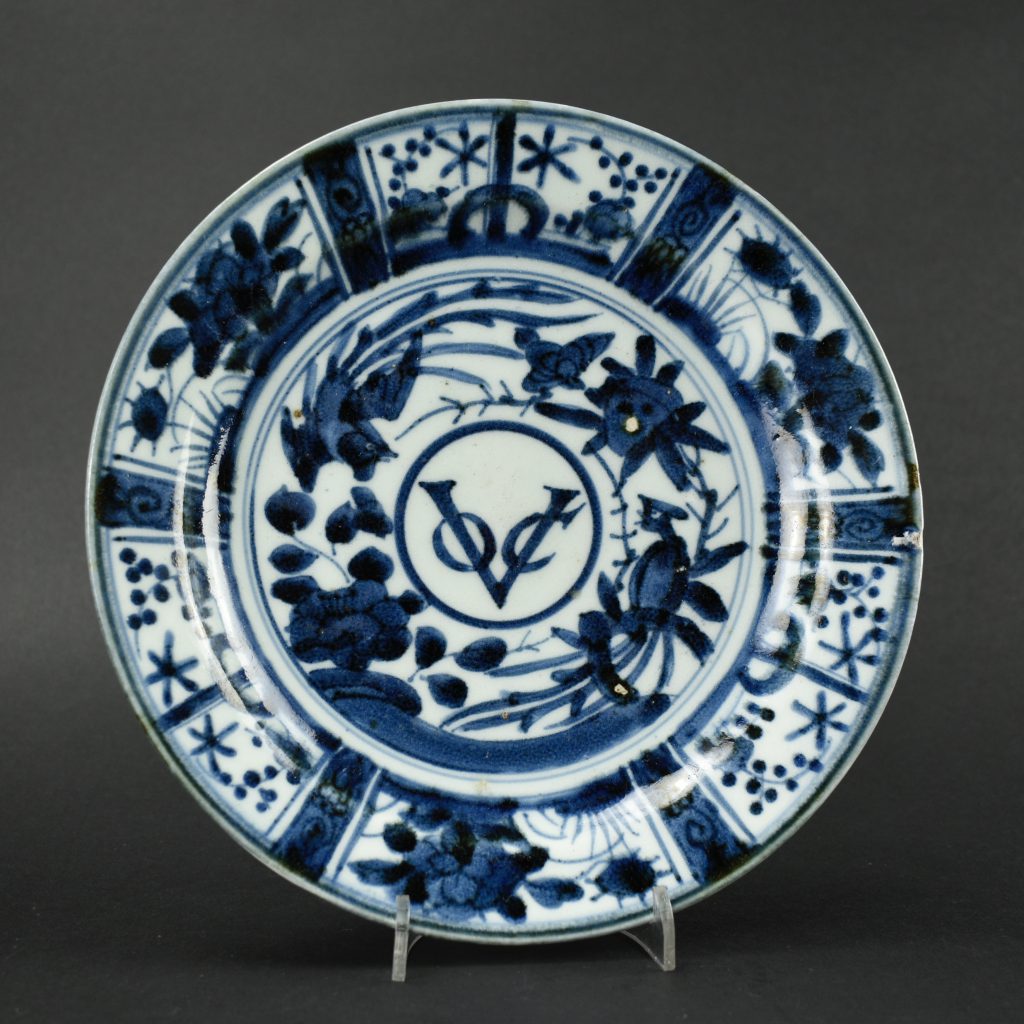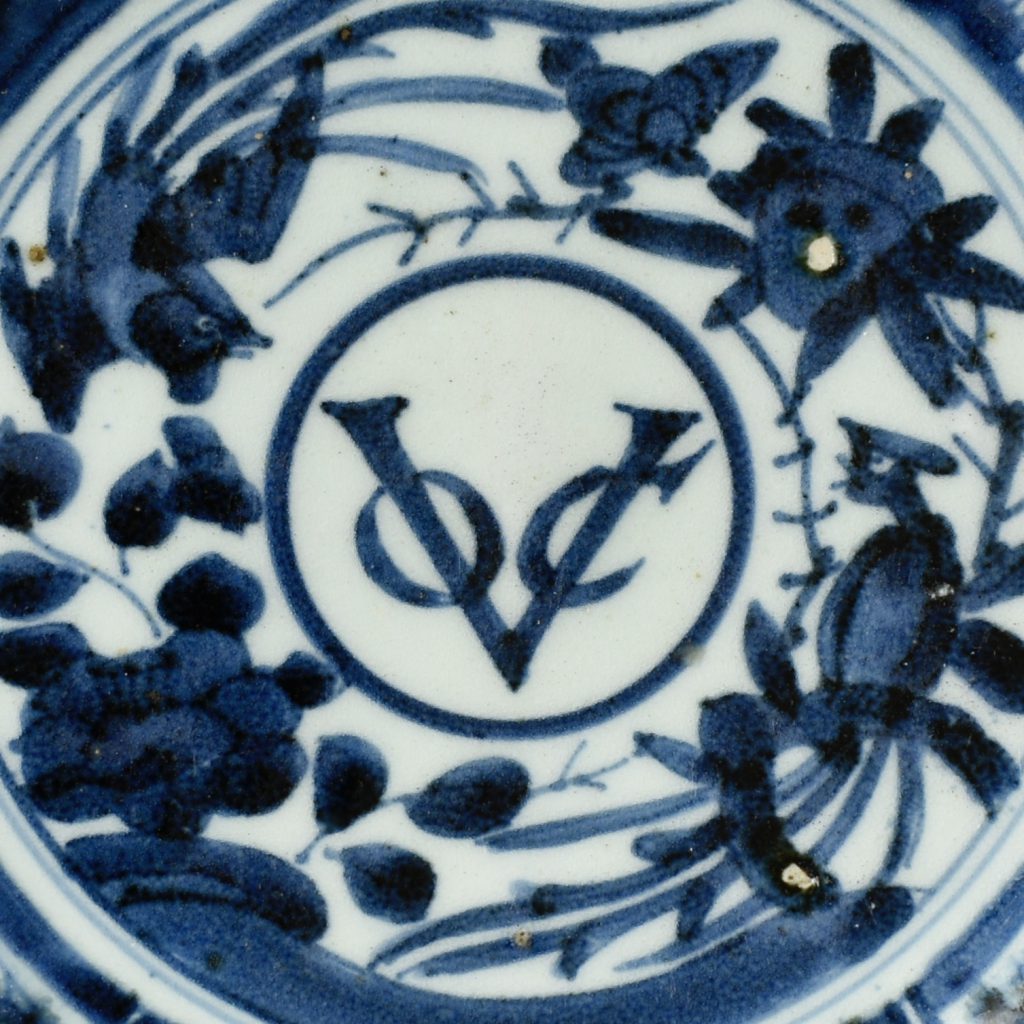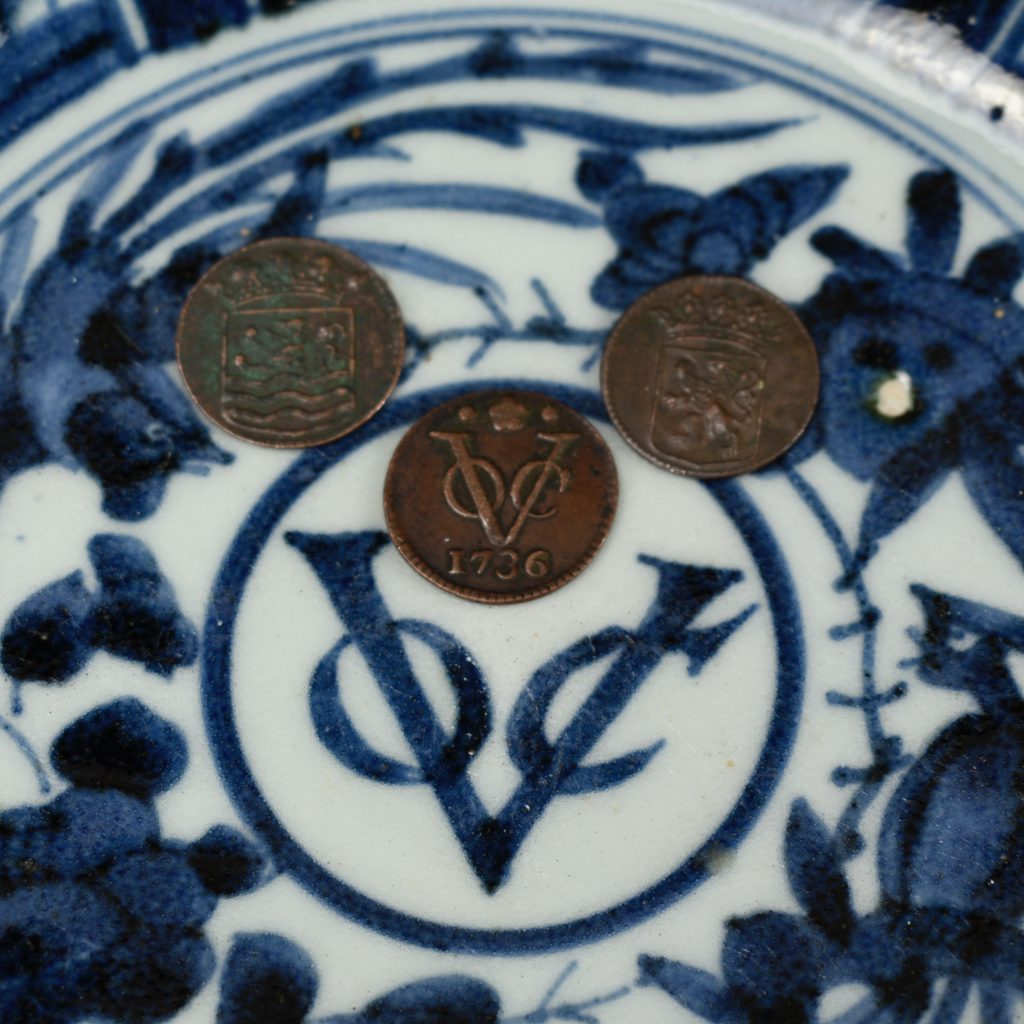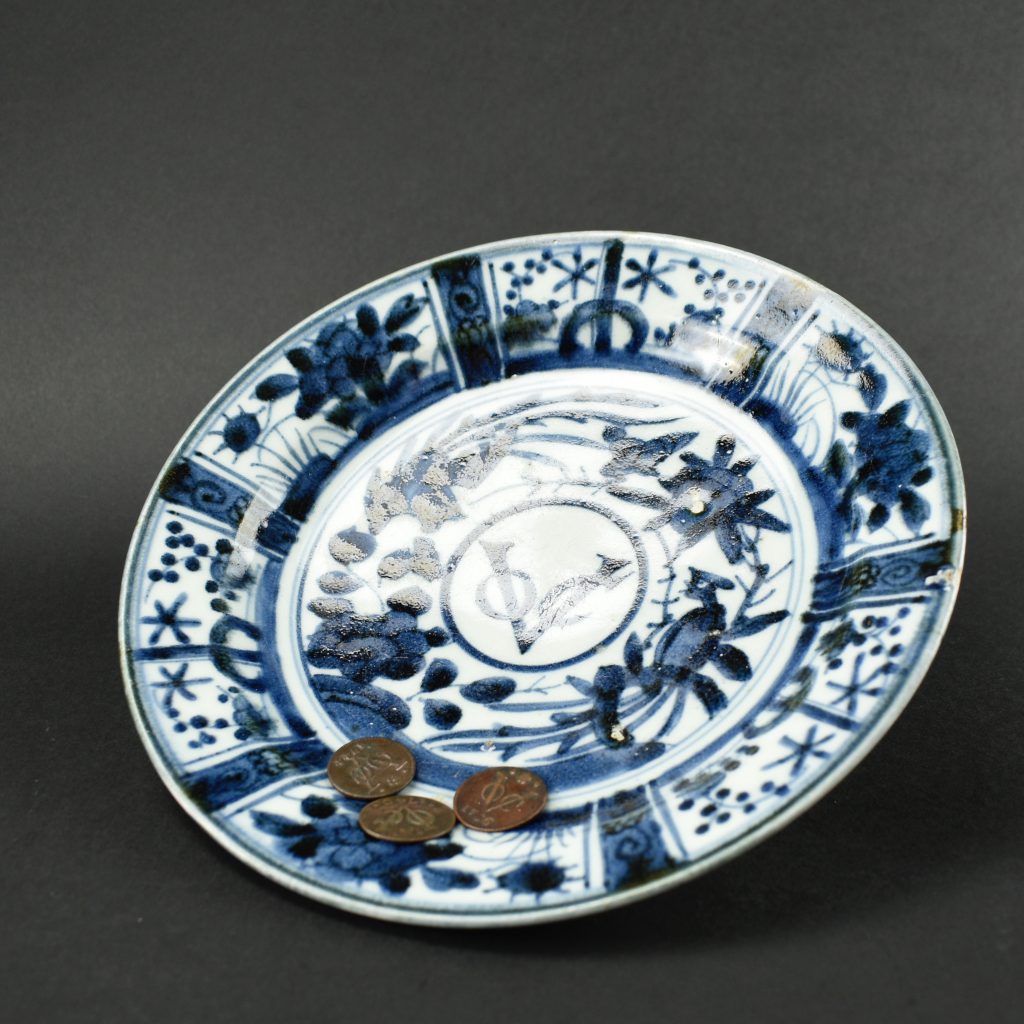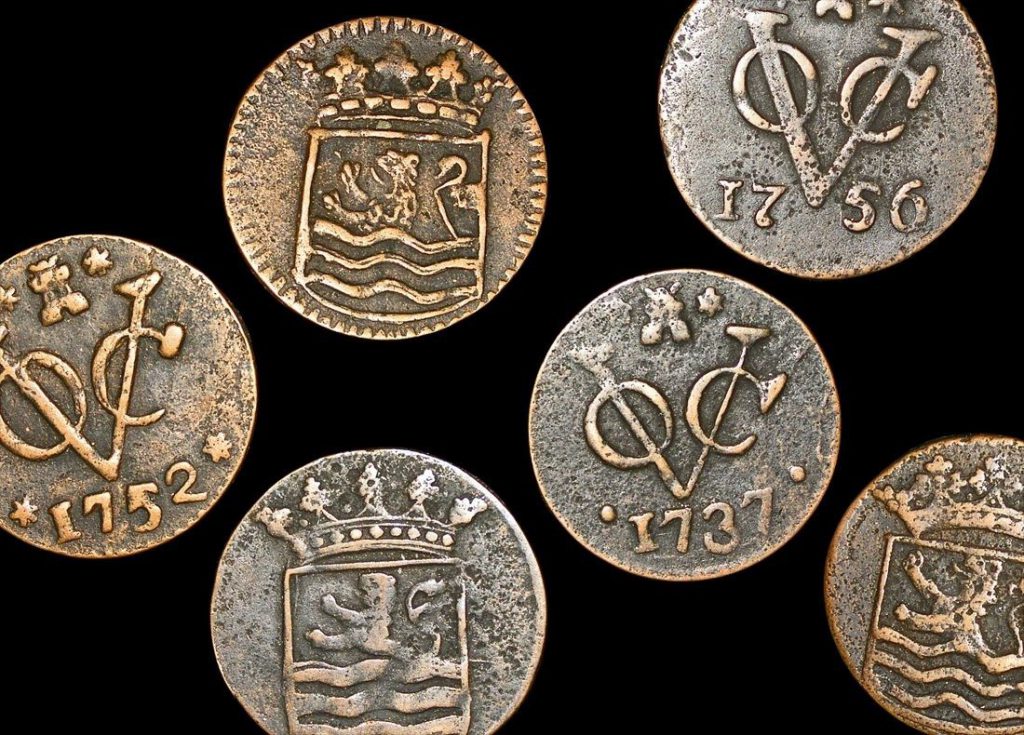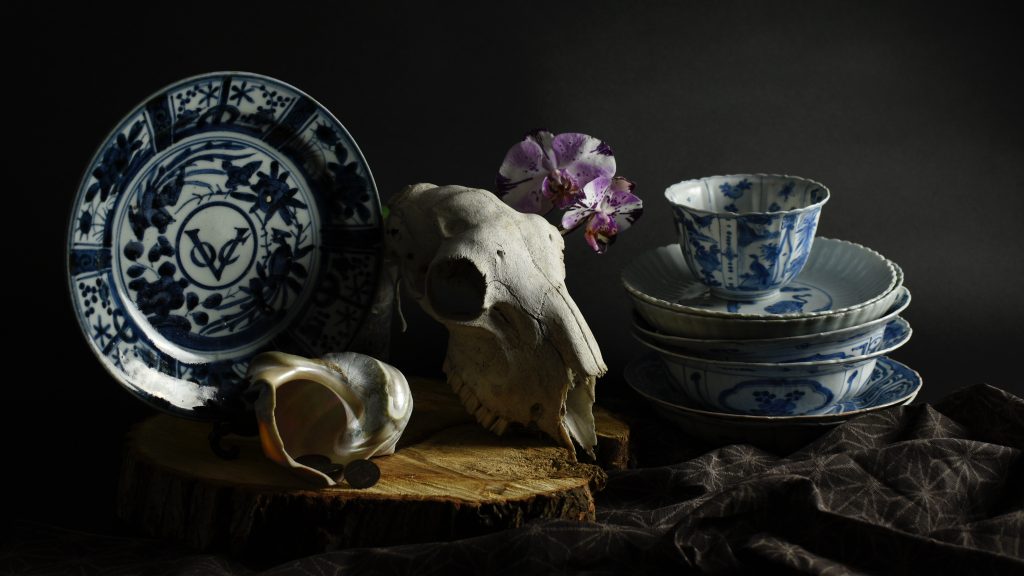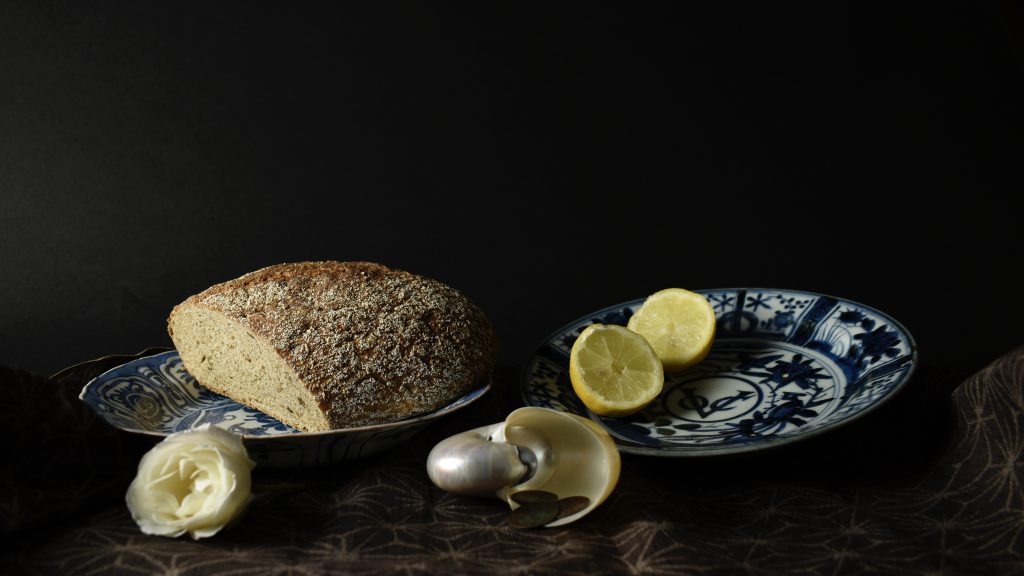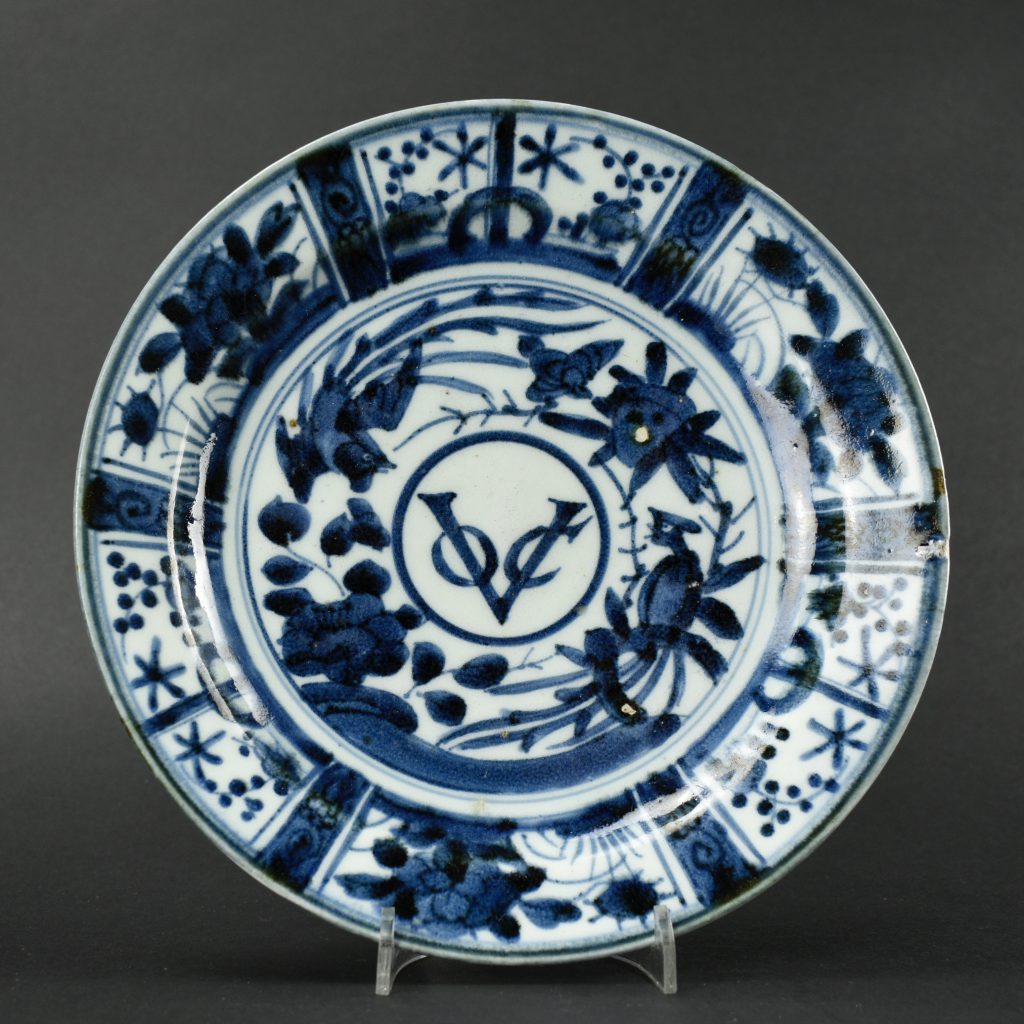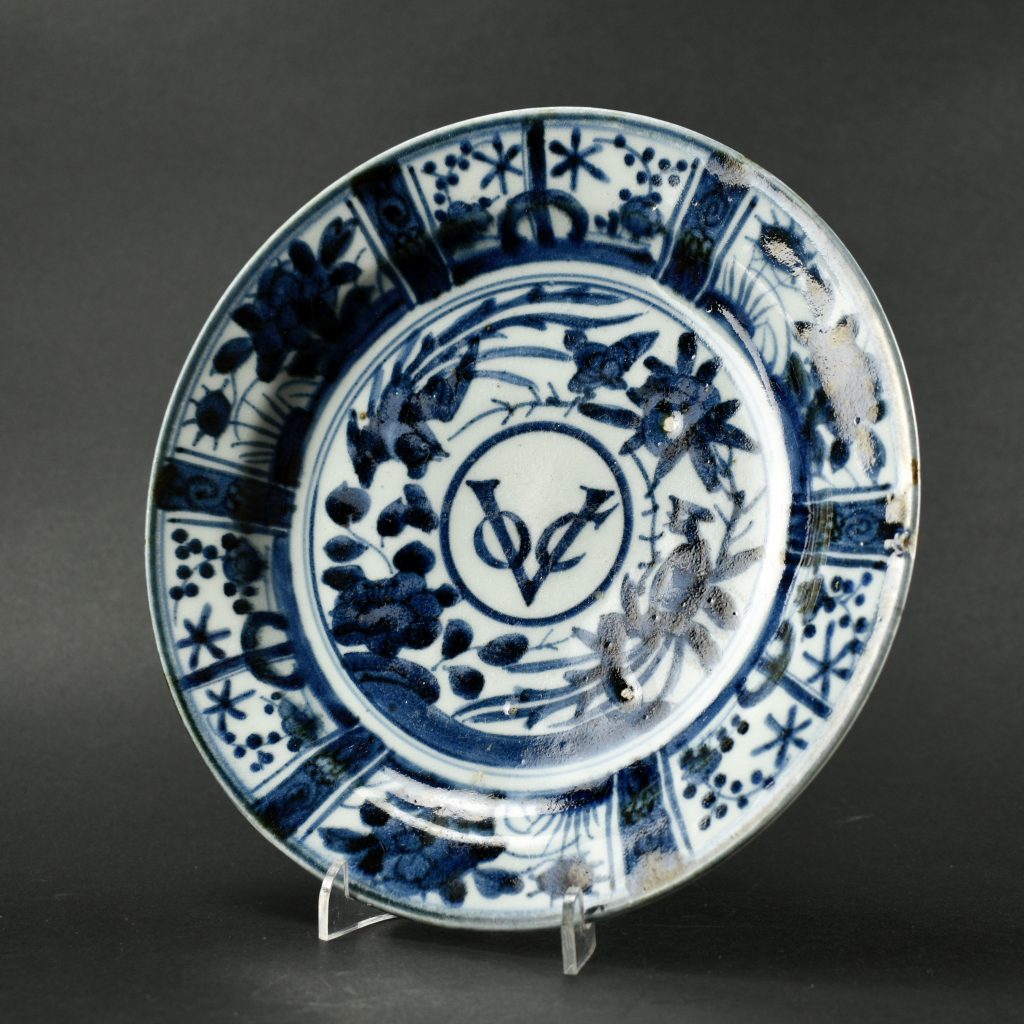3-1886
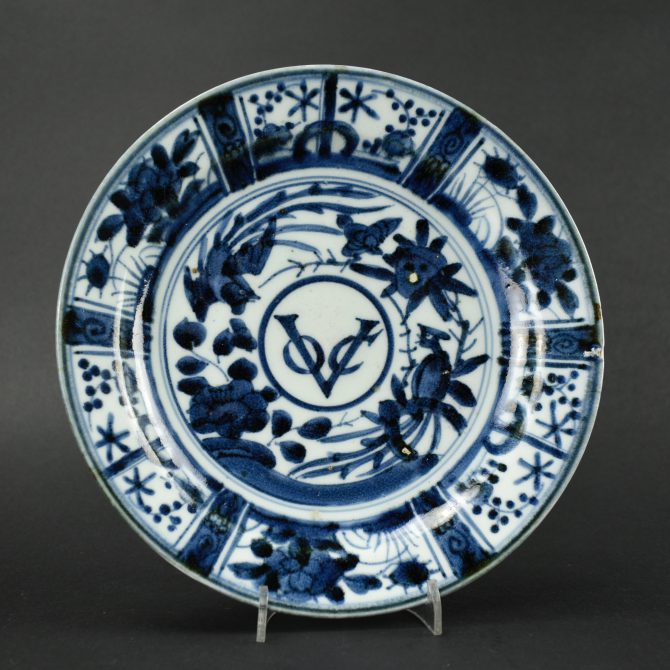
A 17th or 18th Century Japanese Kraak Style V.O.C Dish
A Japanese Export Porcelain Dish for the Vereenigde Oostindische Compagnie, (V.O.C.) c.1670 – 1700 or perhaps 1720. This Arita porcelain dish has the V.O.C. monogram to the center within a circle, the V with a smaller O and a C interlinked. This is surrounded by a pair of phoenixes among fruiting peach and camellia. The Kraak style border is of panels with bamboo, peony and prunus. According to Christiaan J.A. Jörg in Fine and Curious, Japanese Export Porcelain in Dutch Collections (Christian J.A. Jörg, Hotei Publishing, 2003. ISBN 90-74822-16-9. Page 225, plate 285), “VOC dishes were probably ordered by the High Government from 1668, when it started to require porcelain from Batavia. VOC dishes were used as an early form of in-house corporate promotion at high-ranking Company employees, at the Factories in Asia, and probably in the officer’s cabins aboard ship”. Jörg goes on to mention the remains of similar dishes have recently been excavated in Deshima, he dates these dishes to c.1670 to 1720. This is the first Japanese VOC dish I have had in 40 years in business.
For more information about Kraak Ware porcelain you can go to the History section of our website-menu, or click on the link: Kraak Ware Porcelain.
SOLD
- Condition
- Some wear to the glaze in the denter of the dish. Firing faults - two small areas to the center where there is no glaze, a piece of kiln grit to the edge.
- Size
- 21.3 cm (8 1/4 inches)
- Provenance
- An old label to the base "From the collection of Mr Justice R. P. Davis - see Davis Collection, S.A. Museum (Oriental China)". This appears to refere to an exhibition of December 1953. British Antique Dealers Association label. Sold at Christie's Amsterdam - European Noble and Private Collections, 24 - 25 June 2008, lot 385.
- Stock number
- 25997
- References
- For a VOC dish of this design dated to 1680 - 1720 in the Groninger Museum see : Fine and Curious, Japanese Export Porcelain in Dutch Collections (Christian J.A. Jorg, Hotei Publishing, 2003. ISBN 90-74822-16-9. Page 225, plate 285. Another of these VOC dishes is in : Kraak Porcelain, A Moment in the History of Trade (Maura Rinaldi, Bamboo Publishing,1989) Page 226, plate 286. A similar Japanese V.O.C. dish dated to c.1660 is in The Metropolitan Museum of Art in New York Accession Number: 2002.447.40.
Information
Japanese Porcelain with the V.O.C Monogram
Japanese V.O.C. Dish Dated to c.1660
The Metropolitan Museum of Art in New York Accession Number: 2002.447.40.
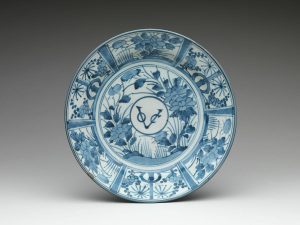
This dish has a white background decorated ornately in underglaze blue, with a paneled border around the rim. This is typical of the type of export ware known as kraak, which originated in China and was imitated by potters in Japan at the request of the Dutch.
Japanese V.O.C. Dish Dated to c.1660 - 1680
Victoria and Albert Museum, London.
- Museum number:
- Gallery location:
Japan, Room 45, The Toshiba Gallery, case 3
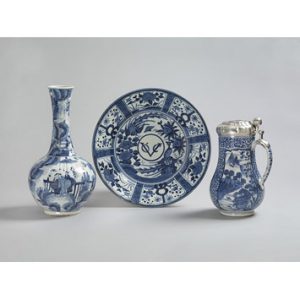
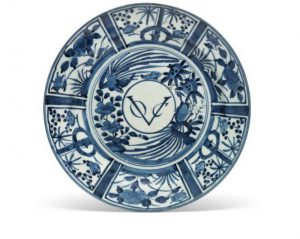
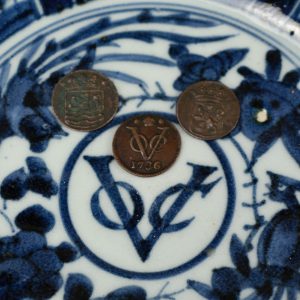
V.O.C. Duits
